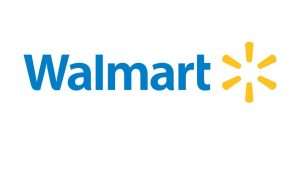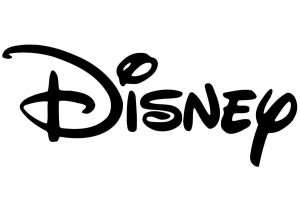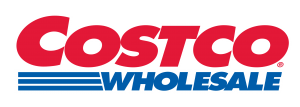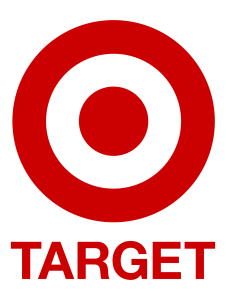
COC Audit Capability Audit Capacity Audit Social Audit Ethical Audit Environmental Audit
FACTORY AUDIT
FACTORY DEVELOPMENT
AS PER CLIENT'S REQUIREMENT
Please Click in the following Menus for your desire factory audit as per popular client name
Adidas Factory Audit
Adidas Supplier Audit Checklist:
General Information:
- Supplier name, address, and contact information.
- Date of the audit and names of auditors.
- Scope of the audit (e.g., manufacturing facility, distribution center).
- Confirmation of compliance with Adidas’ supplier policies and standards.
Documentation:
- Business Registration.
- Permits and Licenses mandated by Local Regulations.
- Tax Registration.
- Certificates for Social Insurance, Housing Fund Contributions, Social Insurance Payment Records, Commercial Insurance, and Housing Fund Payment Records.
- Employee Handbook, including factory rules, employee assessment system, punishment and reward policy, wage calculation policy, and employee benefits policy.
- Company Profile.
- Factory Floor Plan/Emergency Layout of all areas.
- Organization Chart (HR, HSE, and compliance team) & Job Descriptions.
- Labor & HSE Training Documents/Records for the last 6 – 12 months, including certifications (if any).
Labor and Employment Practices:
14. Employment Files/Records (randomly selected by auditor).
- Template of Employment Contract.
- Employee Register/Application Form.
- Copy of Employee Identification Card & Age Proof Document.
- Copy of Passport/Work Permit (if applicable for foreign workers).
- Juvenile Workers List, Juvenile Workers Physical Examination Records.
- Copy of Employee’s other related documents (leave records, reward records, warning letters, etc. if any).
- Others (please list out):
- Employee Training Needs Assessment, Training Procedure, Training Plan, Training Records.
- Recruitment Post and Hiring Policy, Procedures.
15. Local Minimum Wage Standard/Decree; Social Insurance Baseline and Contribution Regulations; Local Work Hours Standard/Decree and/or Internal Company Wage Structure.
- Payroll & Working Hours Documents/Records for the last 6 to 12 months.
- Time Cards/Attendance Records/Printout of employee’s time in & out.
- Overtime Request/Consent Letter.
- Waiver of Overtime Hours from Legal Authority (if any).
- Status of Overall Working Hours Report for the last 6 to 12 months.
- Pay Slips.
- Bank Transfer Records.
- Employee Monthly Flow Rate, Employee Resignation Records and Application.
- Salary Payments for exit workers, severance package payments, etc.
- Bonus/Other Payment Records (if any).
- Other Payments like annual leave, festivity allowances, transport allowance, etc. (if any).
- Leaves Records of all kinds of leaves/Summary of Leaves Taken.
- Status of Disciplinary Records for the last 6 to 12 months (Warning Letter Log Book), Record of Verbal Warning, Written Warning, Demotion, and Termination.
- List of newly hired employees for the last 3 months & their status (intern/trainers/probation).
- Registration of Union/Employee Representative to local authority (if any).
- Consent letter from employees for union dues (if any).
- Records of Grievance System (Suggestion Box, Hotline Channels, etc. if any).
Health, Safety, and Environmental Compliance:
- Updated Relevant HSE Regulations.
- Permits/Licenses for Machine/Equipment, Facility, Operator & Regular Monitoring Records.
- Boiler and Operator.
- Power Generator/Emergency Power Machine and Operator.
- Forklift, Freight Lift, Compressor, Hand Lift, Welder, etc.
- License for Electrical Installation, Lighting Conductor, etc.
- Inspection Records related to local law (fire extinguishers, emergency lights, fire alarms, smoke detectors, sprinklers, etc.).
- Fire Safety Permit/License.
- Building Construction Certification/License.
- Environmental Certification/Disposal License and Permit/Registration Report/Environment Impact Assessment (EIA) Report/Approval of Environmental Impact Assessment.
- Regular workplace monitoring: drinking water, wastewater, noise, air quality (as required by local law), etc.
- Hazardous waste treatment certifications, like transition records, operation permits, and Incinerator operation permit if applicable.
- Health & Safety Committee/Officer Registration & Report to Local Authority.
- Health & Safety Risk Assessment Report, OH Effect-assessment, or Regular Assessment Report.
- Certification/License for in-house clinic and Doctor/Nurses/Paramedics/First Aider (if any).
- Food and Drink Service Permit, Canteen hygiene certificate, kitchen staff physical examination records/MoU with Canteen Providers (if available).
- Accident, Incident, and Occupational Diseases Record for the last 12 months.
- Copy of summary of medical checkup or/and specific checkup especially with employees working in hazardous conditions (if any).
- MSDS List/Chemical Inventory (refer to attached form).
- Fire and Evacuation Drill records within 6 months.
- OHSAS 18001 and ISO14001 if applicable.
- Labor and HSE internal audit records.
- Water abstraction permit if applicable.
- SEA workers Hotline Poster.
- Qualified suppliers list.
Specialized Areas (if Available):
- Pregnant Employees, Persons with Disabilities (PWD), Migrant Employees, Juvenile Employees, and Outsource Employees.
- Permit/License related to pregnant, PWD, Migrant, Juvenile Employees, and Outsource Employees (as required by local law).
- List of Pregnant, PWD, Migrant, Juvenile Employees, and Outsource Employees in the factory (include the country of origin for migrant employees). Current job position for pregnant and juvenile; Age proof documents for Juvenile.
- Contract Agreement with Recruitment Agent/Service Provider (if any).
Comments and Observations:
- Overall assessment of the supplier’s compliance with Adidas’ standards.
- Notable observations or concerns.
- Corrective actions required and their timelines.
- Confirmation of corrective action implementation.
This checklist is a comprehensive guide for auditing Adidas suppliers, covering various aspects of labor practices, documentation, and health, safety, and environmental compliance. Adjustments may be made based on specific requirements and regulations in different regions.
Walmart Factory Audit

Walmart Supplier Evaluation Audit
1. General Information:
- Supplier Information: Verify the accuracy and completeness of supplier details, ensuring they align with Walmart’s records.
- Audit Date and Auditors: Confirm the date of the audit and the names and qualifications of the auditors.
- Scope of Audit: Clearly define the scope of the audit, specifying the areas of the supplier’s operations to be assessed.
- Compliance Confirmation: Validate adherence to Walmart’s supplier policies and standards.
2. Documentation:
- Legal Compliance: Confirm the possession of legal documents such as Business Registration, Permits, Licenses, and Tax Registration as required by local regulations.
- Employee Handbook and Company Profile: Assess the completeness and alignment of the Employee Handbook and Company Profile with Walmart’s expectations.
- Floor Plan and Organization Chart: Review the layout of the facility and the organizational structure to ensure compliance and efficiency.
- Training Records: Verify the availability and effectiveness of training programs, especially those related to labor and health and safety.
3. Labor and Employment Practices:
- Employment Files: Inspect randomly selected employment files for completeness and compliance with contractual and legal obligations.
- Wage and Hour Compliance: Confirm adherence to local minimum wage standards, work hours, and related regulations.
- Payroll Records: Review payroll and working hours records to ensure accurate compensation and adherence to legal requirements.
- Leaves and Disciplinary Records: Evaluate the management of leaves, disciplinary actions, and any other employee-related records.
- Union and Grievance Procedures: Check the registration of unions, if applicable, and the effectiveness of grievance resolution procedures.
4. Health, Safety, and Environmental Compliance:
- Regulatory Compliance: Ensure compliance with relevant Health, Safety, and Environmental regulations.
- Permits and Licenses: Verify the existence and validity of permits and licenses related to machinery, facilities, and operations.
- Workplace Safety: Inspect workplace safety measures, including emergency response plans, first aid, and fire safety.
- Environmental Impact: Assess the impact of operations on the environment, including waste management and emissions.
- Health and Safety Records: Review records related to health and safety, including accident reports and risk assessments.
5. Specialized Areas (if Available):
- Special Employee Categories: Evaluate compliance with regulations related to pregnant employees, Persons with Disabilities (PWD), Migrant Employees, Juvenile Employees, and Outsource Employees.
- Contract Agreements: Review agreements with recruitment agents or service providers, if applicable.
6. Comments and Observations:
- Overall Assessment: Provide an overall assessment of the supplier’s compliance with Walmart’s standards.
- Observations and Concerns: Document any notable observations or areas of concern identified during the audit.
- Corrective Actions: Specify corrective actions required, including timelines for implementation.
- Confirmation: Confirm the completion and effectiveness of corrective actions.
This detailed Walmart Supplier Audit Checklist aims to cover various aspects of supplier operations, ensuring compliance with Walmart’s standards and regulations. It can be customized based on specific requirements and the regulatory environment of the supplier’s location.
Disney Factory Audit

Disney Factory Evolution Audit Process
1. Pre-Audit Preparation:
Communication:
- Verify the understanding of the audit purpose with the factory management.
- Clarify the expected cooperation and access to all relevant information.
Documentation:
- Request and review documents such as business registration, permits, licenses, and quality management system documentation.
- Ensure that the factory has Disney’s Ethical Sourcing Standards readily available.
2. Onsite Audit:
Opening Meeting:
- Introduce the audit team and outline the objectives and scope of the audit.
- Emphasize the importance of cooperation and transparency.
Document Review:
- Verify the authenticity and completeness of the provided documents.
- Assess compliance with Disney’s Ethical Sourcing Standards and local regulations.
Facility Inspection:
- Evaluate the condition of workstations, production areas, and storage facilities.
- Confirm the presence of safety signage, emergency response plans, and ethical labor practices.
Employee Interviews:
- Conduct interviews to gauge employee awareness of Disney’s guidelines.
- Gather feedback on working conditions and training programs.
Records Examination:
- Review records related to employee hours, wages, leave, and disciplinary actions.
- Ensure accuracy and adherence to relevant regulations.
Environmental and Safety Checks:
- Inspect environmental practices, waste management, and emissions control.
- Evaluate workplace safety measures and emergency response capabilities.
Specialized Areas:
- If applicable, assess compliance in areas such as the treatment of pregnant employees, persons with disabilities, and adherence to local regulations.
Closing Meeting:
- Summarize preliminary findings.
- Provide the factory with an opportunity to address immediate concerns.
3. Post-Audit Analysis:
Data Compilation:
- Organize audit findings, document reviews, and interview notes.
- Categorize observations based on criticality and importance.
Comparison with Standards:
- Evaluate the factory’s performance against Disney’s Ethical Sourcing Standards and regulatory requirements.
- Identify areas of non-compliance.
Identification of Non-Compliance:
- Highlight and document specific instances of non-compliance.
- Prioritize findings based on severity and potential impact.
4. Corrective and Preventive Actions (CAPA):
Root Cause Analysis:
- Investigate the root causes of identified non-compliance.
- Examine systemic issues related to processes, training, or resource constraints.
CAPA Plan Development:
- Develop a comprehensive plan with specific actions for each non-compliance issue.
- Specify responsible parties, timelines, and success criteria for each corrective action.
Implementation:
- Execute the corrective actions as outlined in the CAPA plan.
- Monitor progress and make adjustments as necessary.
Monitoring:
- Regularly assess the status of corrective actions.
- Verify that implemented changes effectively address root causes.
5. Follow-Up Audit:
Scheduling:
- Determine the timing for a follow-up audit to assess the effectiveness of the CAPA.
- Ensure it aligns with the agreed-upon timelines for corrective actions.
Verification:
- Confirm that corrective actions have been implemented and are sustaining.
- Assess the overall progress and effectiveness of the CAPA plan.
Continuous Improvement:
- Recommend additional improvements based on follow-up audit findings.
- Encourage a culture of continuous improvement within the factory.
Disney Factory Evolution Audit Checklist:
1. Documentation:
- Business Registration and Licenses.
- Permits for Facilities and Operations.
- Disney’s Ethical Sourcing Standards.
- Quality Management System Documents.
- Environmental Compliance Certifications.
2. Facility Inspection:
- Workstations and Production Areas.
- Storage and Inventory Management.
- Safety Signage and Equipment.
- Emergency Response Plans.
- Ethical Labor Practices.
3. Employee Practices:
- Employment Contracts and Records.
- Wage and Hour Compliance.
- Employee Training Programs.
- Records of Employee Benefits and Disciplinary Actions.
- Grievance Resolution Procedures.
4. Specialized Areas:
- Treatment of Pregnant Employees, Persons with Disabilities, etc.
- Compliance with Local Regulations.
5. Environmental and Safety Compliance:
- Waste Management Practices.
- Emissions and Pollution Control.
- Workplace Safety Measures.
- Records of Accidents and Incidents.
- Regular Workplace Monitoring.
6. Follow-Up Audit:
- Verification of Implemented Corrective Actions.
- Assessment of Sustainability of Improvements.
- Additional Recommendations for Continuous Improvement.
Corrective and Preventive Actions (CAPA):
1. Root Cause Analysis:
- Identify the fundamental reasons for non-compliance.
- Investigate underlying issues related to processes, training, or resource constraints.
2. CAPA Plan Development:
- Develop a comprehensive plan addressing each identified non-compliance issue.
- Define specific actions, responsible parties, timelines, and success criteria for each corrective action.
3. Implementation:
- Execute the corrective actions according to the defined plan.
- Monitor progress and adjust the plan as necessary.
4. Monitoring:
- Regularly assess the status of corrective actions
(CAPAR)
Target Factory Audit
Target Factory Evolution Audit Process
1. Pre-Audit Preparation:
Communication:
- Verify understanding of the audit’s purpose and objectives with the factory management.
- Confirm the factory’s awareness of Target’s supplier standards and the importance of compliance.
Documentation:
- Request and review documents, including business registration, permits, licenses, and quality management system documentation.
- Ensure that the factory has access to and understands Target’s ethical and safety standards.
2. Onsite Audit:
Opening Meeting:
- Emphasize the significance of transparency, cooperation, and adherence to Target’s standards.
- Outline the audit’s scope, objectives, and the expected duration.
Document Review:
- Verify the authenticity of business registration, permits, and licenses.
- Ensure compliance with quality management system documentation and Target’s supplier standards.
Facility Inspection:
- Assess the overall condition of the facility, focusing on cleanliness, organization, and safety.
- Check for adherence to Target’s guidelines on workplace conditions and ethical practices.
Employee Interviews:
- Engage with employees to assess their awareness of Target’s supplier standards.
- Gather feedback on working conditions, training programs, and overall job satisfaction.
Records Examination:
- Review records related to employee hours, wages, leave, and disciplinary actions.
- Confirm the accuracy and completeness of employee records.
Environmental and Safety Checks:
- Evaluate the factory’s compliance with environmental regulations.
- Inspect safety measures, emergency response plans, and adherence to Target’s safety guidelines.
Specialized Areas:
- Assess compliance with regulations related to pregnant employees, persons with disabilities, etc.
- Ensure that the factory meets Target’s standards for special categories.
Closing Meeting:
- Summarize preliminary findings and observations.
- Allow the factory an opportunity to address immediate concerns.
3. Post-Audit Analysis:
Data Compilation:
- Organize audit findings, document reviews, and interview notes.
- Categorize observations based on severity and importance.
Comparison with Standards:
- Evaluate the factory’s performance against Target’s supplier standards and relevant regulations.
- Identify areas of non-compliance.
Identification of Non-Compliance:
- Document specific instances of non-compliance.
- Prioritize findings based on severity and potential impact.
4. Corrective and Preventive Actions (CAPA):
Root Cause Analysis:
- Identify the root causes of non-compliance.
- Investigate underlying issues related to processes, training, or resource constraints.
CAPA Plan Development:
- Develop a comprehensive plan addressing each non-compliance issue.
- Specify actions, responsible parties, timelines, and success criteria for each corrective action.
Implementation:
- Execute corrective actions as outlined in the CAPA plan.
- Monitor progress and make adjustments as necessary.
Monitoring:
- Regularly assess the status of corrective actions.
- Verify that implemented changes effectively address root causes.
5. Follow-Up Audit:
Scheduling:
- Determine the timing for a follow-up audit to assess the effectiveness of the CAPA.
- Align with the agreed-upon timelines for corrective actions.
Verification:
- Confirm that corrective actions have been fully implemented.
- Assess the overall progress and effectiveness of the CAPA plan.
Continuous Improvement:
- Recommend additional improvements based on follow-up audit findings.
- Encourage a culture of continuous improvement within the factory.
Target Factory Evolution Audit Checklist:
1. Documentation:
Business Registration and Licenses:
- Verify the authenticity of business registration.
- Confirm the validity of licenses necessary for factory operations.
Permits for Facilities and Operations:
- Check permits related to machinery, equipment, and overall factory operations.
Target’s Supplier Standards:
- Confirm that the factory is aware of and adheres to Target’s supplier standards.
- Verify compliance with labor, environmental, and safety standards.
Quality Management System Documents:
- Review documents related to quality control processes and procedures.
Environmental Compliance Certifications:
- Ensure the factory holds certifications for environmental compliance.
2. Facility Inspection:
Workstations and Production Areas:
- Assess the cleanliness, organization, and safety of workstations and production areas.
- Check for compliance with Target’s guidelines on workplace conditions.
Storage and Inventory Management:
- Evaluate how raw materials and finished goods are stored.
- Ensure proper inventory management practices are in place.
Safety Signage and Equipment:
- Confirm the presence of safety signs and labels.
- Check the condition and accessibility of safety equipment.
Emergency Response Plans:
- Review emergency response plans and procedures.
- Verify that employees are aware of evacuation routes and emergency contacts.
Ethical Labor Practices:
- Observe employee working conditions, including factors such as working hours and breaks.
- Check for signs of ethical labor practices, such as fair wages and humane treatment.
3. Employee Practices:
Employment Contracts and Records:
- Verify the existence of employment contracts and their adherence to labor laws.
- Check the accuracy and completeness of employee records.
Wage and Hour Compliance:
- Ensure compliance with local regulations regarding wages and working hours.
- Verify that employees are compensated fairly and that working hours adhere to legal standards.
Employee Training Programs:
- Assess the effectiveness of training programs, especially those related to Target’s ethical standards.
- Confirm that employees are adequately trained on safety and environmental practices.
Records of Employee Benefits and Disciplinary Actions:
- Review records related to employee benefits and disciplinary actions.
- Ensure fair and consistent application of policies.
Grievance Resolution Procedures:
- Check the availability and understanding of grievance resolution procedures.
- Confirm that employees know how to raise concerns and that there is a mechanism for addressing grievances.
4. Specialized Areas:
Treatment of Pregnant Employees, Persons with Disabilities, etc.:
- Assess compliance with regulations related to pregnant employees, persons with disabilities, and other special categories.
- Ensure that appropriate accommodations are provided as per local laws.
Compliance with Local Regulations:
- Ensure adherence to all local regulations that may apply to the factory’s operations.
5. Environmental and Safety Compliance:
Waste Management Practices:
- Verify that the factory follows proper waste management practices.
- Confirm disposal methods for hazardous materials.
Emissions and Pollution Control:
- Assess measures in place to control emissions and pollution.
- Verify compliance with environmental standards.
Workplace Safety Measures:
- Confirm the availability and proper functioning of safety measures.
- Check for compliance with workplace safety regulations.
Records of Accidents and Incidents:
- Review records of accidents and incidents in the workplace.
- Evaluate the effectiveness of incident reporting and investigation procedures.
Regular Workplace Monitoring:
- Ensure routine monitoring of workplace conditions, including factors like air quality, noise levels, and overall safety.
6. Follow-Up Audit:
Verification of Implemented Corrective Actions:
- Confirm that corrective actions from the initial audit have been fully implemented.
- Verify that any non-compliance issues have been adequately addressed.
Assessment of Sustainability of Improvements:
- Evaluate the sustainability of improvements made based on the initial audit.
- Assess whether implemented changes have become integral to ongoing operations.
Additional Recommendations for Continuous Improvement:
- Identify further areas for improvement based on the follow-up audit.
- Provide recommendations for ongoing enhancements to factory operations.
This detailed Target Factory Evolution Audit Checklist is designed to cover a wide range of aspects, ensuring compliance with ethical standards, labor regulations, and environmental practices. Adjustments may be made based on specific factory operations and local regulations.
COSTCO Factory Audit

Costco Factory Evolution Audit Process
1. Pre-Audit Preparation:
Communication:
- Engage with factory management to ensure a clear understanding of the audit’s purpose and objectives.
- Confirm that the factory is aware of the importance of compliance with Costco’s standards.
Documentation:
- Request and review essential documents, including business registration, permits, licenses, and quality management system documentation.
- Verify the factory’s access to and comprehension of Costco’s ethical and safety standards.
2. Onsite Audit:
Opening Meeting:
- Emphasize transparency, cooperation, and the necessity of adherence to Costco’s standards.
- Clearly outline the scope, objectives, and anticipated duration of the audit.
Document Review:
- Scrutinize business registration, permits, and licenses for authenticity and validity.
- Ensure compliance with quality management system documentation and adherence to Costco’s supplier standards.
Facility Inspection:
- Assess the overall condition of the facility, with a focus on cleanliness, organization, and safety.
- Verify adherence to Costco’s guidelines regarding workplace conditions and ethical practices.
Employee Interviews:
- Engage with employees to gauge their awareness of Costco’s supplier standards.
- Solicit feedback on working conditions, training programs, and overall job satisfaction.
Records Examination:
- Review records related to employee hours, wages, leave, and disciplinary actions.
- Confirm the accuracy and completeness of employee records.
Environmental and Safety Checks:
- Evaluate the factory’s compliance with environmental regulations.
- Inspect safety measures, emergency response plans, and adherence to Costco’s safety guidelines.
Specialized Areas:
- Assess compliance with regulations related to pregnant employees, persons with disabilities, etc.
- Ensure that the factory meets Costco’s standards for special categories.
Closing Meeting:
- Summarize preliminary findings and observations.
- Provide the factory with an opportunity to address immediate concerns.
3. Post-Audit Analysis:
Data Compilation:
- Organize audit findings, document reviews, and interview notes.
- Categorize observations based on severity and importance.
Comparison with Standards:
- Evaluate the factory’s performance against Costco’s supplier standards and relevant regulations.
- Identify areas of non-compliance.
Identification of Non-Compliance:
- Document specific instances of non-compliance.
- Prioritize findings based on severity and potential impact.
4. Corrective and Preventive Actions (CAPA):
Root Cause Analysis:
- Identify the root causes of non-compliance.
- Investigate underlying issues related to processes, training, or resource constraints.
CAPA Plan Development:
- Develop a comprehensive plan addressing each non-compliance issue.
- Specify actions, responsible parties, timelines, and success criteria for each corrective action.
Implementation:
- Execute corrective actions as outlined in the CAPA plan.
- Monitor progress and make adjustments as necessary.
Monitoring:
- Regularly assess the status of corrective actions.
- Verify that implemented changes effectively address root causes.
5. Follow-Up Audit:
Scheduling:
- Determine the timing for a follow-up audit to assess the effectiveness of the CAPA.
- Align with the agreed-upon timelines for corrective actions.
Verification:
- Confirm that corrective actions have been fully implemented.
- Assess the overall progress and effectiveness of the CAPA plan.
Continuous Improvement:
- Recommend additional improvements based on follow-up audit findings.
- Encourage a culture of continuous improvement within the factory.
Costco Factory Evolution Audit Checklist:
1. Documentation:
Business Registration and Licenses:
- Verify the authenticity of business registration.
- Confirm the validity of licenses necessary for factory operations.
Permits for Facilities and Operations:
- Check permits related to machinery, equipment, and overall factory operations.
Costco’s Supplier Standards:
- Confirm that the factory is aware of and adheres to Costco’s supplier standards.
- Verify compliance with labor, environmental, and safety standards.
Quality Management System Documents:
- Review documents related to quality control processes and procedures.
Environmental Compliance Certifications:
- Ensure the factory holds certifications for environmental compliance.
2. Facility Inspection:
Workstations and Production Areas:
- Assess the cleanliness, organization, and safety of workstations and production areas.
- Check for compliance with Costco’s guidelines on workplace conditions.
Storage and Inventory Management:
- Evaluate how raw materials and finished goods are stored.
- Ensure proper inventory management practices are in place.
Safety Signage and Equipment:
- Confirm the presence of safety signs and labels.
- Check the condition and accessibility of safety equipment.
Emergency Response Plans:
- Review emergency response plans and procedures.
- Verify that employees are aware of evacuation routes and emergency contacts.
Ethical Labor Practices:
- Observe employee working conditions, including factors such as working hours and breaks.
- Check for signs of ethical labor practices, such as fair wages and humane treatment.
3. Employee Practices:
Employment Contracts and Records:
- Verify the existence of employment contracts and their adherence to labor laws.
- Check the accuracy and completeness of employee records.
Wage and Hour Compliance:
- Ensure compliance with local regulations regarding wages and working hours.
- Verify that employees are compensated fairly and that working hours adhere to legal standards.
Employee Training Programs:
- Assess the effectiveness of training programs, especially those related to Costco’s ethical standards.
- Confirm that employees are adequately trained on safety and environmental practices.
Records of Employee Benefits and Disciplinary Actions:
- Review records related to employee benefits and disciplinary actions.
- Ensure fair and consistent application of policies.
Grievance Resolution Procedures:
- Check the availability and understanding of grievance resolution procedures.
- Confirm that employees know how to raise concerns and that there is a mechanism for addressing grievances.
4. Specialized Areas:
Treatment of Pregnant Employees, Persons with Disabilities, etc.:
- Assess compliance with regulations related to pregnant employees, persons with disabilities, and other special categories.
- Ensure that appropriate accommodations are provided as per local laws.
Compliance with Local Regulations:
- Ensure adherence to all local regulations that may apply to the factory’s operations.
5. Environmental and Safety Compliance:
Waste Management Practices:
- Verify that the factory follows proper waste management practices.
- Confirm disposal methods for hazardous materials.
Emissions and Pollution Control:
- Assess measures in place to control emissions and pollution.
- Verify compliance with environmental standards.
Workplace Safety Measures:
- Confirm the availability and proper functioning of safety measures.
- Check for compliance with workplace safety regulations.
Records of Accidents and Incidents:
- Review records of accidents and incidents in the workplace.
- Evaluate the effectiveness of incident reporting and investigation procedures.
Regular Workplace Monitoring:
- Ensure routine monitoring of workplace conditions, including factors like air quality, noise levels, and overall safety.
6. Follow-Up Audit:
Verification of Implemented Corrective Actions:
- Confirm that corrective actions from the initial audit have been fully implemented.
- Verify that any non-compliance issues have been adequately addressed.
Assessment of Sustainability of Improvements:
- Evaluate the sustainability of improvements made based on the initial audit.
- Assess whether implemented changes have become integral to ongoing operations.
Additional Recommendations for Continuous Improvement:
- Identify further areas for improvement based on the follow-up audit.
- Provide recommendations for ongoing enhancements to factory operations.
This comprehensive Costco Factory Evolution Audit Checklist is designed to cover a wide range of aspects, ensuring compliance with ethical standards, labor regulations, and environmental practices. Adjustments may be made based on specific factory operations and local regulations.
Factory Audit for other clients
Audit Checklist will be provided based on the specific requirement.
WHY QIV FOR FACTORY AUDIT?

- We handle whole turn-key or tailormade project
- Quality is in our DNA
- Training of factory staff is included with our proposal
- We consider industry best practice
- The client's ex-employees are on our expert list.


